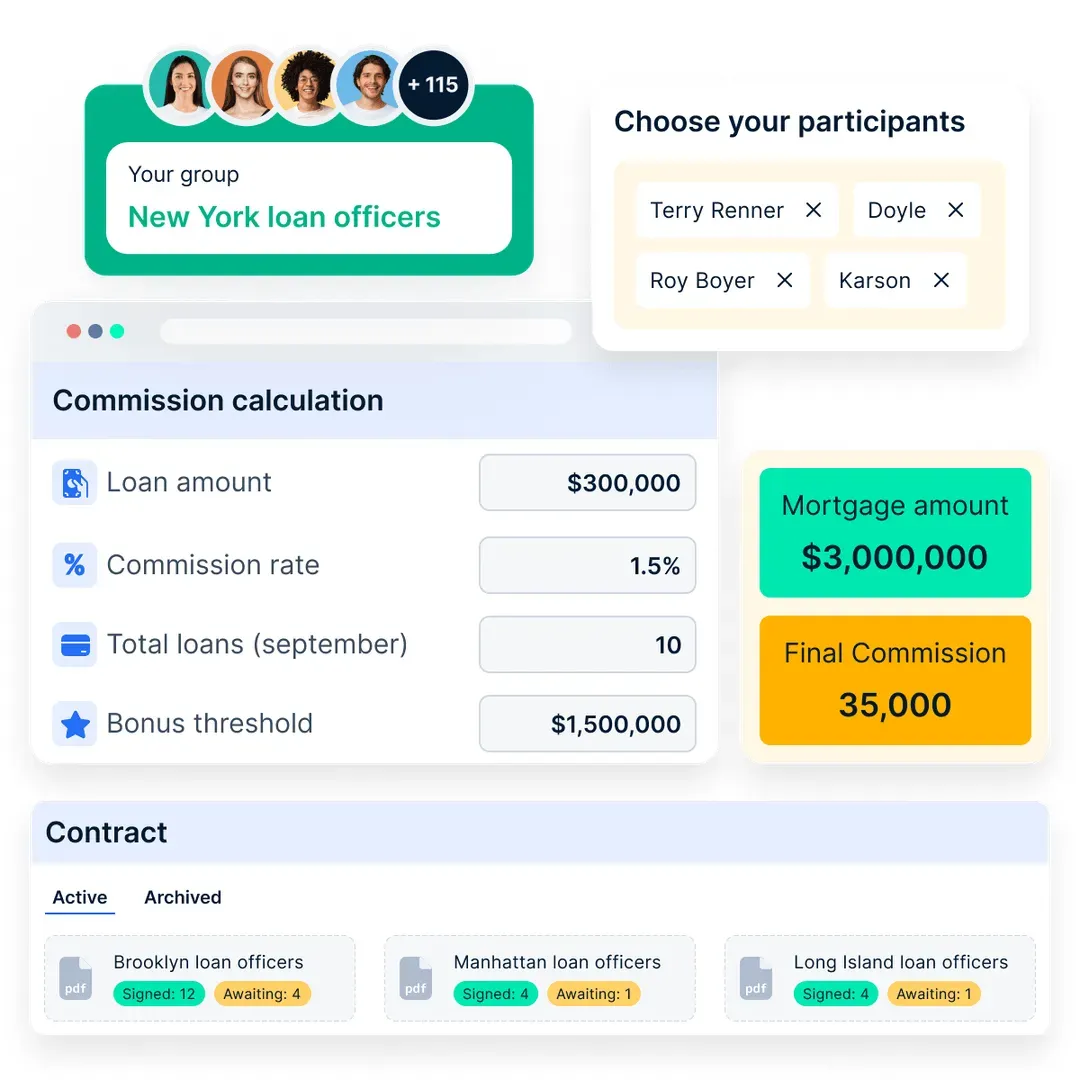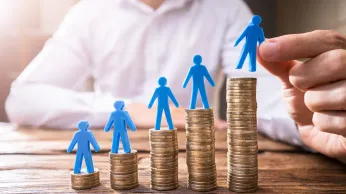How Do Incentives Shape Behavior in 7 Ways: Understanding the Psychology Impact of Incentives
Learn how incentives influence behavior to drive employee motivation, improve productivity, and foster goal alignment using strategic rewards and compensation.
In questa pagina
In che modo gli incentivi influenzano il comportamento? Gli incentivi funzionano davvero per migliorare la produttività e contribuire a promuovere relazioni migliori tra datori di lavoro e dipendenti? Qual è la psicologia alla base dei programmi di incentivazione e del comportamento desiderato dai dipendenti? Se vi state interrogando su queste domande, questo blog vi aiuterà a orientarvi nel processo.
Gli incentivi agiscono come un sistema di ricompensa e sono utilizzati dai datori di lavoro e dai proprietari di aziende per premiare i comportamenti corretti e per motivare i venditori a lavorare in un modo specifico, definito come rinforzo del comportamento.
In questo blog esploreremo il rinforzo positivo per i comportamenti attesi utilizzando la tecnica di ricompensa più comune: gli incentivi. Parleremo anche di come gli incentivi influenzano la psicologia dei dipendenti, dell'uso degli incentivi per allineare gli obiettivi dei dipendenti e dell'azienda e del ruolo degli incentivi nell'upskilling, nell'apprendimento esteso e continuo.
Comprendere la psicologia degli incentivi
A renowned psychologist Charlie Munger writes about incentives and its power for employee management in his book where he talks about incentive as the ultimate tool that is often ignored by top management, but is the only that holds the key to the right management.
Secondo la maggior parte degli psicologi che studiano le vendite e i fattori economici che contribuiscono alle prestazioni dei dipendenti, gli incentivi sono sempre stati il fattore chiave per la crescita e la produttività dell'azienda.
Esistono molti tipi di incentivi che i datori di lavoro possono prendere in considerazione: incentivi in denaro, bonus, punti premio, schemi di sconto, programmi di benefit e molti altri. Indipendentemente dal tipo di incentivo scelto per i dipendenti, è importante allineare il tipo di incentivo all'obiettivo da raggiungere, ovvero il giusto comportamento da parte dei dipendenti.
Powerful incentives have helped employees have a keen sense of achievement and establish reinforcement of good behavior, in this case good performance, adhering to goals or achieving targets and contributing to overall growth. Reinforcement behavior and incentives have been linked by several studies showing a good incentive can reinforce the right employee behavior.
✅ Eliminate errors and delays in payouts by automating incentive compensation management (ICM) tasks.
✅ Ensure accuracy with automated calculations, removing manual errors with modern ICM software.
✅ Create structured hierarchies for earnings approval, escalations, and seamless communication with sales reps.
Incentivi e modifiche del comportamento
Most psychologists agree that incentives help in molding and shaping the right behavior in humans and therefore helps with conditioning the employees when used in companies.
This helps in aligning the employee with the goals and objectives of the company and thereby, appraising or rewarding employees in a way that the right behavior is appreciated and recognized. Using a positive reinforcement technique such as a cash incentive, a bonus, a gift card or any other type of incentive for the employee is known to have a positive effect on the employee mindset.
An example of an incentive system by employers that triggered the right behavior by the use of reward systems was seen in the case of Southwest Airlines, the employees are automatically enrolled in the SWAG platform that helps employees collect reward points with good performance, meeting targets, helping others in projects, appreciating fellow employees etc. Using the points collected, they can encash it at the SWAG shop for gift cards, cash bonuses, tickets for movies, concerts and for dining or travel expenses.
Utilizzando questa piattaforma, il datore di lavoro è riuscito a creare un ambiente di produttività, comportamento lavorativo positivo, supporto e coinvolgimento dei dipendenti, il tutto con un unico programma di incentivi.
✔ Analyze and refine compensation structures for maximum impact.
✔ Clone high-performing plans that drive increased quota attainment.
✔ Adjust incentive programs dynamically to match changing revenue goals and market conditions.
Incentivi e definizione degli obiettivi
The goal theory suggests having a clear goal which is defined and cut out for each employee by the employer to create a work environment that is clear and attainable so that employees feel challenged and satisfied when they attain the said goals.
Questi obiettivi devono essere in linea con gli obiettivi generali dell'azienda o della società, in modo che ogni individuo dell'azienda contribuisca direttamente al raggiungimento degli obiettivi generali dell'azienda.
When the goals of an employee are linked with incentives, employees are motivated to do better, achieve targets, exceed them and contribute in other ways such as helping teammates, improve client relationships, contribute to the society etc. Several research suggests that the incentive works as an operant conditioning, which pulls employees into a good behavior pattern attracted by incentives offered by the employer. These incentives can be of various forms:
- Bonus
- Indennità di viaggio, vitto, ecc.
- Commissioni di vendita
- Stock option per i dipendenti
- Pensione e indennità accessorie
They focus on employee wellness and allows employees to choose the location and job where they can be most productive. This has helped in modifying employee behavior that has made them choose to come to work and stay productive at all times.
However, modern organizations need a more efficient way to manage incentives that goes beyond traditional commission structures. Compass helps organizations build transparent, performance-driven cultures with:
✔ In-app dispute resolution, eliminating endless email threads and reducing escalations.
✔ Community-driven platforms where sales teams can share best practices, foster competition, and enhance collaboration.
✔ Real-time feedback systems, allowing reps to voice opinions on commission plans, ensuring continuous optimization.
Il ruolo degli incentivi in economia
Rewards and incentives is a powerful tool that drives the economy and shapes consumer behavior just as it shapes employee behavior. It acts as a driving force for the right behavior from the consumer by means of driving sales through discounts. Many different benefits are offered by the government and the various companies to drive economic growth and shaping consumer behavior such as:
- Incentivi fiscali e sconti da parte dei datori di lavoro e del governo
- Sussidi per l'utilizzo di energia e terreni per l'agricoltura e l'allevamento
- Incentivi finanziari che includono stock option, sconti, incentivi alle vendite, ecc.
Oltre a queste misure più importanti, le aziende offrono altri incentivi minori per promuovere le vendite:
- Sconti per grandi quantità
- Offerte non monetarie (uno compra uno, ecc.)
- Buoni regalo e coupon di sconto
These offers help drive better sales, create better relationships with customers, provide exemplary offers that develop brand loyalty etc. Money motivation in the form of incentive and surcharge is driving the economy and is shaping consumer behavior globally.
Incentivi e prestazioni dei dipendenti
La motivazione dei dipendenti, la produttività e gli incentivi sono fortemente interconnessi. Molte ricerche suggeriscono che gli incentivi e le punizioni funzionano come l'approccio del bastone e della carota.
Quando un datore di lavoro vuole inculcare un comportamento positivo, come una migliore presenza, il raggiungimento di obiettivi, il superamento di obiettivi, il contributo ad altri progetti, l'aiuto a cause sociali, eccetera, viene ricompensato con un incentivo. Questo aiuta a motivare i dipendenti e a renderli ancora più produttivi, offrendo loro una ricompensa per il buon lavoro svolto.
Allo stesso modo, una punizione per il mancato raggiungimento di una determinata scadenza o di obiettivi o per l'assenza dal lavoro viene ricompensata negativamente con una punizione o una multa. Questa è la parte "bastone" dell'accordo e viene praticata nella maggior parte delle aziende.
It helps in shedding reinforcing the right behavior although it is debatable in the current era. Research proves that where only punishment exists without rewards or incentives, it can cause stigma at the workplace.
- employee motivation and productivity through incentives
- different types of workplace incentives (e.g., bonuses, promotions)
- employee recognition and its impact on job satisfaction
La psicologia della gratificazione ritardata
There is a famous research that links delayed gratification, self control and better productivity as human beings in every area of life which is known as the Marshmallow experiment. A study found that those who waited patiently and got their work done received rewards at a delayed time which helped them stay focussed, undistracted and be more productive.
Questo esperimento dimostra che i dipendenti che hanno aspettato pazientemente le loro ricompense hanno svolto meglio il loro lavoro, sono stati più produttivi e hanno mostrato segni di maggiore soddisfazione per la gratificazione ritardata ricevuta.
Quando i datori di lavoro premiano i dipendenti proprio in quel momento per il lavoro positivo ed eccellente svolto dai dipendenti, possono eliminare l'elemento sorpresa, dare luogo a ricompense minori e richiedere tempo e denaro per il datore di lavoro.
D'altra parte, quando i dipendenti sono stati ricompensati tra periodi di tempo più lunghi, come quelli biennali o trimestrali, hanno mostrato segni di gratificazione ritardata che hanno contribuito a migliorare la produttività e la concentrazione sul lavoro.
Research suggests that employees who displayed signs of grit and perseverance had better performance, job satisfaction and better growth as employees in the long term.
La neuroscienza degli incentivi
Incentives have a profound effect on the brain and the dopamine level of human beings. Incentives are nothing but rewards. As per the popular research by Skinner and the book on Biology of humans at their best and worst, humans have a varied reaction to rewards and recognition that is showered on them that helps in building positive behavior.
Se tradotta sul posto di lavoro, questa ricerca indica che gli incentivi creano un effetto positivo sulle prestazioni aumentando il livello di dopamina, che è direttamente collegato alla felicità, all'eccitazione e alla soddisfazione.
- The big show with CEO appreciation in front of all employees
- The small show with the manager appreciating in front of peers and team members
- The peer to peer appreciation in a small setting Or
- The private show between CEO and employee with a personal appreciation message
Di tutti questi 4 metodi, la ricerca suggerisce che i dipendenti sono stati più felici e inclini al piccolo show, che significa apprezzamento intermittente da parte del manager di fronte ai colleghi e ai membri del team e con premi e riconoscimenti che sono i più adatti.
- come il cervello risponde agli incentivi e alle ricompense
- il rilascio di dopamina e il suo ruolo nella motivazione
- studi neuroeconomici sul processo decisionale guidato dagli incentivi
Incentivi nell'istruzione e nell'apprendimento
Incentives work as an operant conditioning method and helps reinforce positive behavior in employees. This proven fact can be used to the employer advantage to improve the education and learning opportunities of employees as well which helps in boosting productivity and upskilling employees to further enhance the workforce and improve turnover and revenue.
Gli incentivi possono essere uno strumento potente per raggiungere questo obiettivo, semplicemente introducendo sistemi di apprendimento incentivati. I dipendenti possono offrire varie opportunità per espandere gli orizzonti dei dipendenti fornendo:
- Supporto gratuito per l'aggiornamento professionale
- Seguire nuovi corsi
- Iscriversi alla formazione
- Programmi di certificazione che aiutano a migliorare le competenze e le qualifiche educative.
This directly helps in boosting the overall productivity of the workplace, helps in training future managers, pass on the learnings to new employees and adapt a culture of learning and development while at the job.
I programmi che sostengono questo aspetto, come ad esempio gli incentivi legati alla nuova formazione, all'assunzione di opportunità di insegnamento o di mentorship per i nuovi dipendenti, alla formazione dei dipendenti nei progetti, ecc.
Chiudere con Compass
Sebbene il cervello umano e il comportamento umano siano in continua evoluzione e cambino con i tempi, è importante notare che le ideologie di base relative alla ricompensa e al riconoscimento rimangono le stesse.
Gli esseri umani sono predisposti a ricevere positività in qualsiasi forma e i premi e i riconoscimenti sono uno dei modi principali per rafforzare la positività e il morale dei dipendenti sul posto di lavoro. Utilizzando incentivi e un approccio dinamico, "una taglia non vale l'altra", i datori di lavoro possono lavorare per ottenere una forza lavoro migliore, positiva e produttiva per le loro aziende.
Con una visione globale degli incentivi, le aziende moderne sono ora in grado di migliorare il coinvolgimento dei dipendenti, la loro soddisfazione e la produttività complessiva sul lavoro. È importante mantenere la struttura degli incentivi aperta e flessibile, in modo che i datori di lavoro possano utilizzare un approccio dinamico che aiuti a promuovere la positività dei dipendenti.
In today’s competitive business landscape, incentives for sales teams must be designed with precision.

Using AI-powered software like Compass, companies can:
- Automate incentive management, reducing administrative overhead.
- Improve accuracy and transparency, fostering trust among employees.
- Enhance productivity and motivation, leading to higher sales and revenue growth.
Incentives influence behavior, but the key to success lies in efficient management and strategic implementation. Compass empowers businesses to optimize their incentive programs, eliminate inefficiencies, and drive sustainable growth.
Ready to transform your sales team’s performance? Book a demo with Compass and take your incentive compensation strategy to the next level!
Domande frequenti
What is a behavior incentive?
A behavior incentive is a reward used to encourage specific actions or attitudes in individuals. In the workplace, it includes bonuses, recognition programs, or promotions that reinforce positive performance and goal-oriented behavior. Behavior incentives shape workplace culture and enhance overall efficiency.
What is the impact of incentives?
The impact of incentives is seen in increased motivation, better performance, higher engagement, and stronger goal alignment within teams. Well-structured incentives boost productivity, foster job satisfaction, and reduce turnover. In sales, incentives drive revenue growth and improve team morale.
How do incentives influence the behavior of a sales team?
Incentives drive sales teams by reinforcing target-oriented behavior, increasing motivation, and improving productivity. Sales team incentives, such as commissions, bonuses, and performance-based rewards, encourage employees to exceed targets, enhance client relationships, and contribute to overall company growth.
What are incentives and how do they affect economic behavior?
Incentives are rewards or benefits used to motivate individuals to take specific actions. They affect economic behavior by influencing consumer spending, employee productivity, and business performance. Governments use incentives like tax rebates and subsidies to drive economic growth, while businesses offer discounts and bonuses to encourage purchases and performance.














